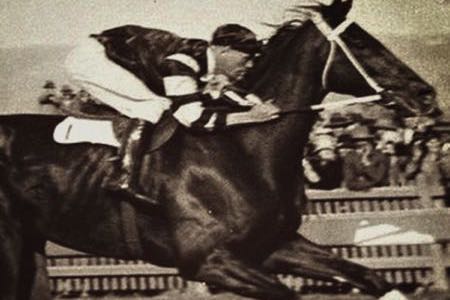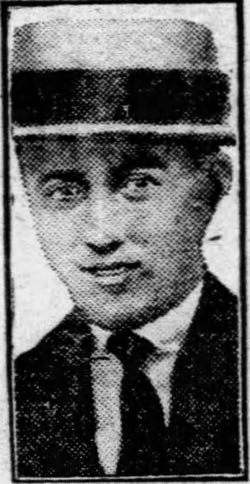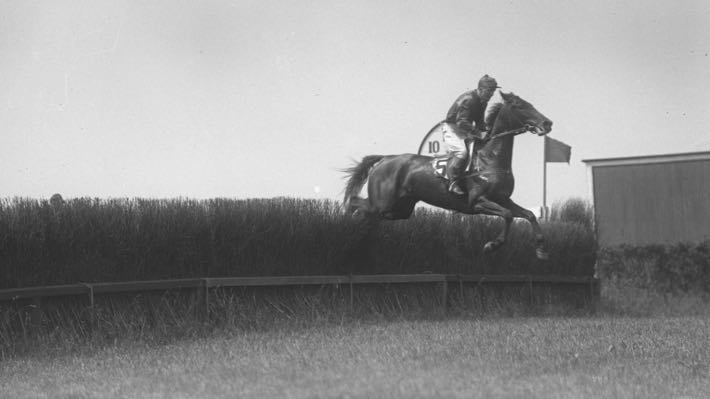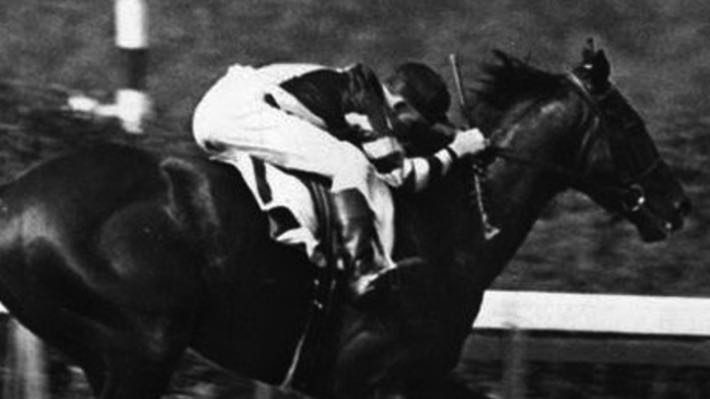 It is not uncommon for jockeys to feel exhausted by the end of a horse race. It is a physically engaging activity that puts their bodies under large amounts of stress and pressure, which you can tell by the fact that they are often quite out of breath when they are interviewed after the race. We also know that, sadly, horses sometimes die after taking part in a race. Some of them die because of a nasty fall, with broken limbs requiring them to be put death for the sake of a humane end, rather than allowing them to be in pain. Whilst some jockeys have also died, it’s usually not during a race.
It is not uncommon for jockeys to feel exhausted by the end of a horse race. It is a physically engaging activity that puts their bodies under large amounts of stress and pressure, which you can tell by the fact that they are often quite out of breath when they are interviewed after the race. We also know that, sadly, horses sometimes die after taking part in a race. Some of them die because of a nasty fall, with broken limbs requiring them to be put death for the sake of a humane end, rather than allowing them to be in pain. Whilst some jockeys have also died, it’s usually not during a race.
That wasn’t the case when it came to Frank Hayes. At some point during a race at Belmont Park in New York in 1923, the 35-year-old jockey suffered a massive heart attack. He died instantly, but he didn’t fall from his horse. Instead, he remained in the saddle and the horse managed to outrace all of its rivals, winning the steeplechase event by a head. It wasn’t until Hayes was approached with congratulations that it was realised that he had died, but the fact that he was still in his saddle meant that he had won the race, in spite of the fact that he was not actually alive at the time.
Who Was Frank Hayes?
 Born in Ireland in 1901, there isn’t a huge amount that we actually know about Frank Hayes. What we do know is that at some point he made his way from Ireland to the United States of America, gaining employment as a horse trainer an a stableman. He wasn’t really a jockey, but in 1923, he was asked to take on the role of riding in the saddle of a horse named Sweet Kiss. Owned by Miss A. M. Frayling, the horse wasn’t particularly well-fancied in the race and was given odds of 20/1. This might have had something to do with Hayes being the rider for the event.
Born in Ireland in 1901, there isn’t a huge amount that we actually know about Frank Hayes. What we do know is that at some point he made his way from Ireland to the United States of America, gaining employment as a horse trainer an a stableman. He wasn’t really a jockey, but in 1923, he was asked to take on the role of riding in the saddle of a horse named Sweet Kiss. Owned by Miss A. M. Frayling, the horse wasn’t particularly well-fancied in the race and was given odds of 20/1. This might have had something to do with Hayes being the rider for the event.
Prior to the beginning of the steeplechase race that Hayes was riding Sweet Kiss in, he had not won a race as a jockey. Whilst this will likely have led to the long odds given by the bookmakers, it didn’t stop the owner from asking him to take on the role of jockey. It is possible that his experience as a trainer is what drove the horse on to perform well in the race, but we obviously don’t know the exact moment that he died so that is something that is all but impossible to tell for sure. All we do know is that Frank Hayes was born in Ireland and died in he USA.
What Happened

Belmont Park is a racecourse that had seen its fair share of exciting races prior to June 1923 and saw a good amount afterwards. Francis Hayes was asked to ride Sweet Kiss in a steeplechase event at the course, but he was 140 pounds at the time. He needed to be 130 pounds in order to make the weight, so he put himself through a programme to be about he shift the pounds. This is unlikely to have put him in a particularly healthy state ahead of the race, with one of the things being unclear about him was his age at the time, given some suggested he was 35.
If he was born in 1901, as the record books appear to suggest, then he would have been 22-years-old in 1923. Regardless, losing such a large amount of weight in a relatively short period of time is nothing something that should be done without the help of professionals. Hayes rode the horse well, getting it in front of the favourite for the race, Gimme. The 20/1 shot was to provide something of a shock result, though it was the owner of the horse and other connections that got the biggest shock when the race was run and they approached the jockey, slumped in the saddle.
The track doctor, John A. Voorhees, immediately approached the body of Hayes and declared him to be dead. Upon inspection, he decided that he had suffered from a heart attack. It was reported in the Brooklyn Daily Eagle that the ‘grim reaper paid a sensational visit to Belmont Park’, with the general feeling being that ‘the exertion and excitement proved too great’. Hayes was, they said, “Well-liked…a favourite in the saddling room and stable and took a great pride in his calling.” As for the horse, it never rode again, being given the unofficial nickname of ‘Sweet Kiss of Death’.
When Did He Die?

It is now 100 years since Frank Hayes died, but when the heart attack actually struck him remains a mystery. During his career, Sweet Kiss was believed to have won $1,775 in earnings, suggesting that it was a horse with some talent. The Head Librarian at Keeneland Library, Roda Ferraro, spoke to CNN about the matter and admitted that the documentation that they had on Hayes was ‘limited’. It was pointed out that there is a remarkable photograph of Hayes on Sweet Kiss, taken mid-jump, which is surprising given the photographers of the day were not steeplechase specialists.
The Guinness World Records claimed without question that Hayes had died during the race itself. It said, “Despite his sudden death, Hayes somehow remained in the saddle long enough for the 20-1 long shot to jump the final fence and cross the finish line in first place.” Whilst we know that horses continue to jump fences even though they’ve lost their jockey, it does seem unlikely that he would have been able to remain in place without the ability to hold onto the reigns. With this in mind, it seems likely that he died either jumping the final fence or soon after making the jump.
In the week following his death, Hayes was buried wearing the riding silks that he had on in the race. They were the colours that was wearing when he achieved his first ever win in the saddle, which also happened to be his last race of any kind. If you’re going to go out, then doing so in a way that sees you not only notch up the first win of your career but also entering the record books at the same time is a pretty impressive achievement. Over 100 years later and Hayes remains the only jockey to have a win to his name despite being dead at the time.
The Rules Don’t Specify That Riders Have to Be Alive
It might seem strange, but the rules of racing don’t actually dictate that a jockey must be alive in order to be crowned the winner. It is, in fairness, not something that anyone would have thought needed to be spelt out and the records in the years since Hayes’ win bear that out. As a result, the fact that he died during the running of the event at Belmont Park does not, in and of itself, mean that he was excluded from being awarded the win. The only thing that might have scuppered it is the fact that jockeys are normally weighed-in after races, but that didn’t happen.
Instead, the Jockey Club immediately declared the result to be valid without the weighing-in procedure being carried out. In the defence of race organisers, it would be an almost impossible thing to decide upon. Even though Hayes was dead, it still feels crude to have taken the win away from him. It would also be difficult to justify why the horse in second place should be declare the winner, considering the fact that another horse finished in front of it with a jockey in the saddle. Whilst it’s unprecedented, declaring him as the winner of the race was the only correct thing to do.